The Franciscans in Medieval Ireland: Sources / Meelick Franciscan Friary, County Galway
- Elaine Harrington
- March 23, 2023
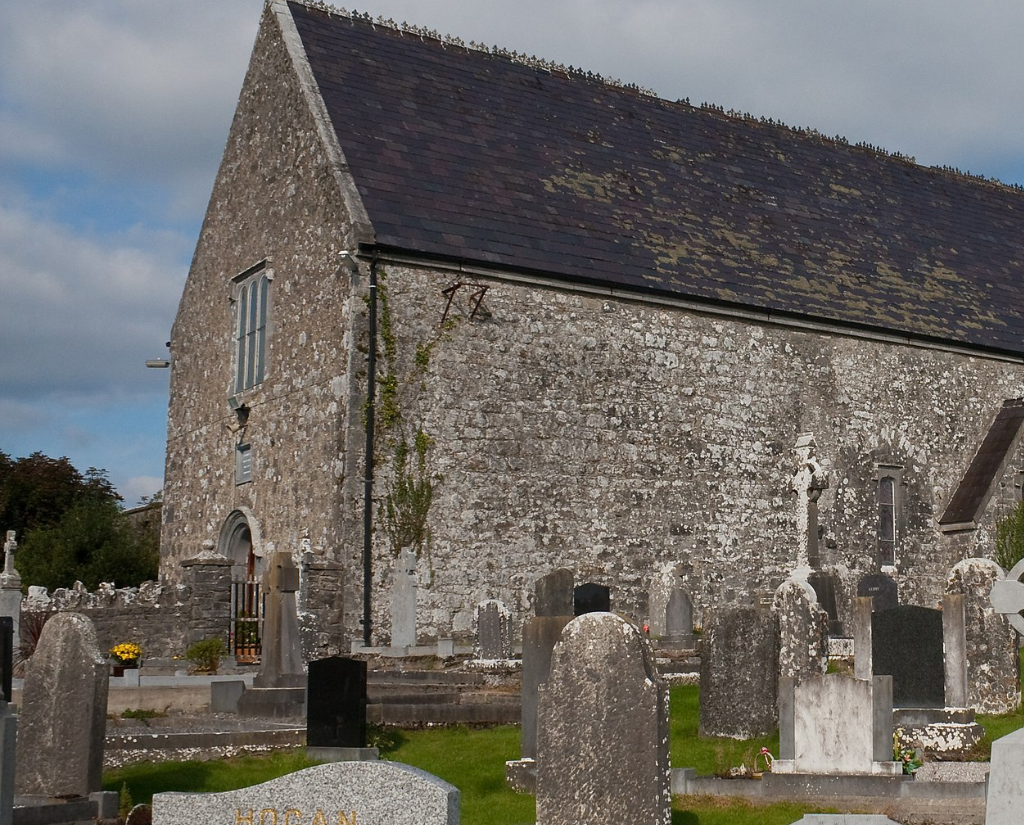
Student Exhibition, MA in Medieval History
Meelick friary is located on the bank of the river Shannon, near the village of Eyrecourt, County Galway, in the diocese of Clonfert.
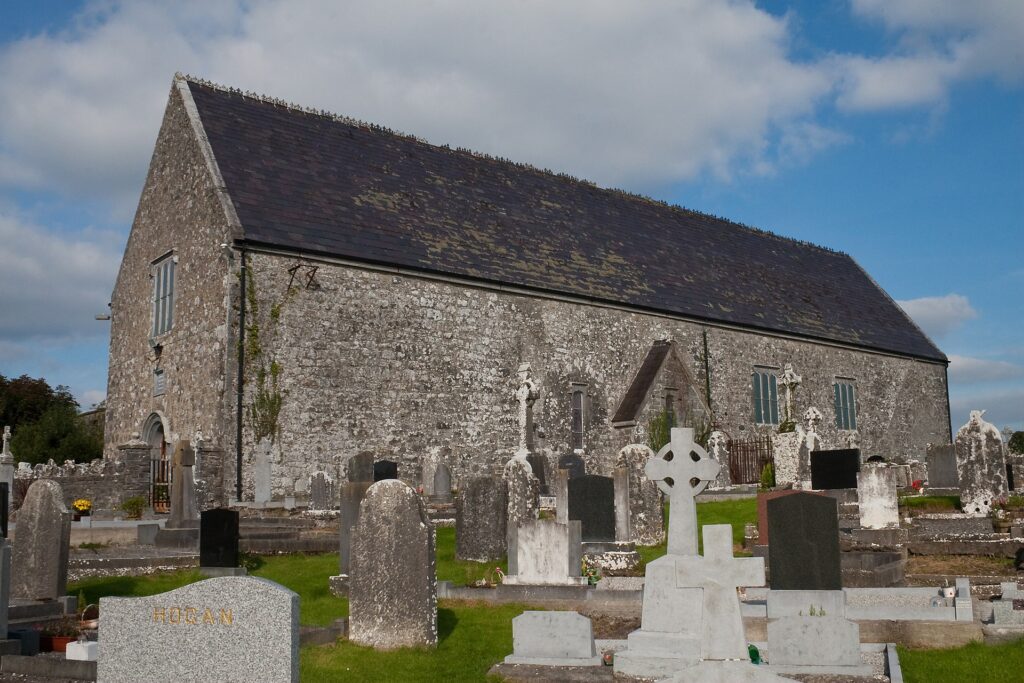
In July 1414 Pope John XXIII granted permission to the bishop of Clonfert to establish three Franciscan friaries, one in the diocese of Ferns and two is the diocese of Clonfert – one of the houses was identified as Meelick (Mylecsynna).
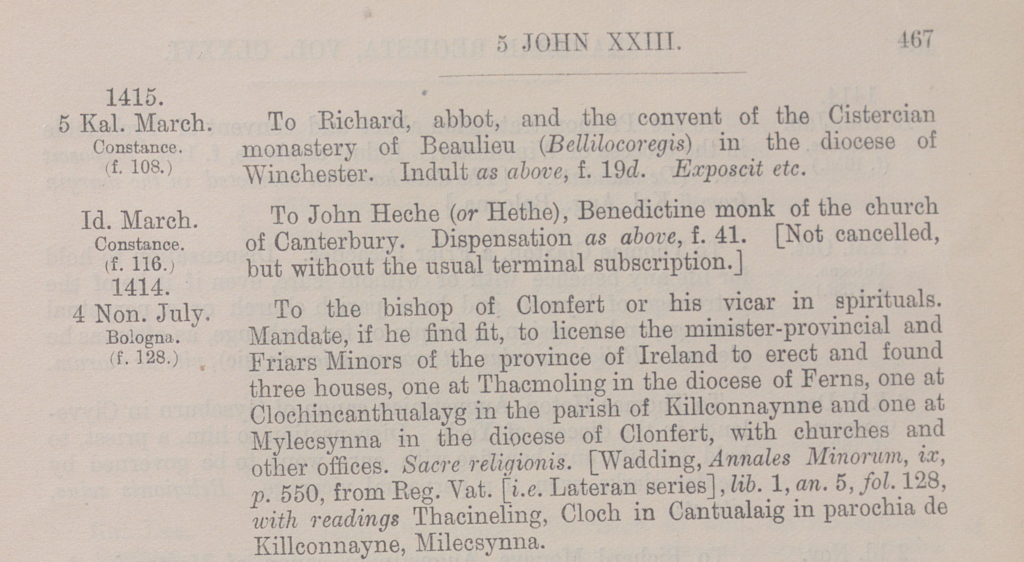
The friary was the O’Madden foundation, with modern scholars agreeing that it was established by Breasal O’Madden. Two early seventeenth-century Irish Provincials, Donatus Mooney and Francis O’Mahony (Matthews), mentioned in previous blog posts, both attributed the foundation to Lord O’Madden, with O’Mahony adding that the friary served as a burial site for the founder and his family. Donatus Mooney described the friary as ‘most conveniently situated, and easy of communication with all parts of the kingdom’ due to its riverine location, with the river being navigable and ‘abounding in fish’.
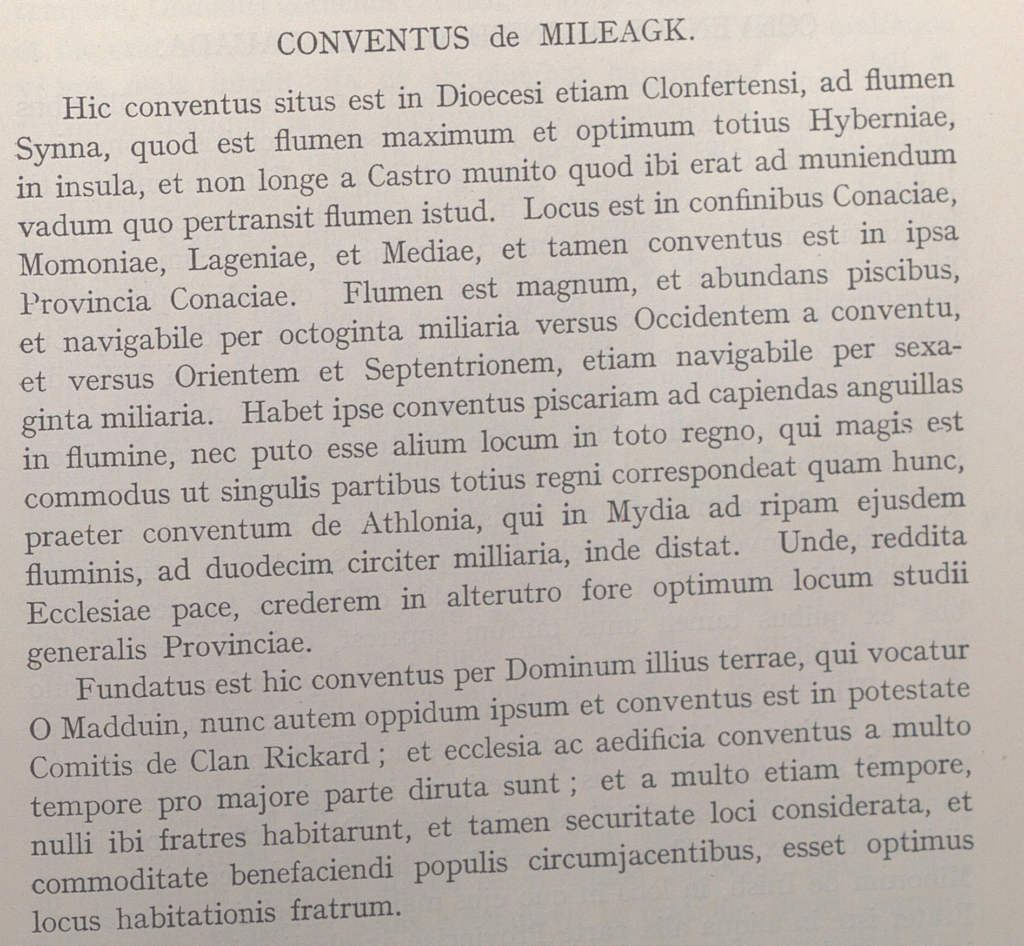

In 1445, Pope Eugene IV granted indulgences to ‘all the faithful’, who contributed to the restoration of the friary. The friary was described at that time as ‘being threatened with the ruin of its church, dormitory, cloister, and other offices, and [being] utterly destitute of ornaments, books, chalices, and ecclesiastical paraments’, which had resulted from ‘wars, pestilences, and divers other sinister events’.
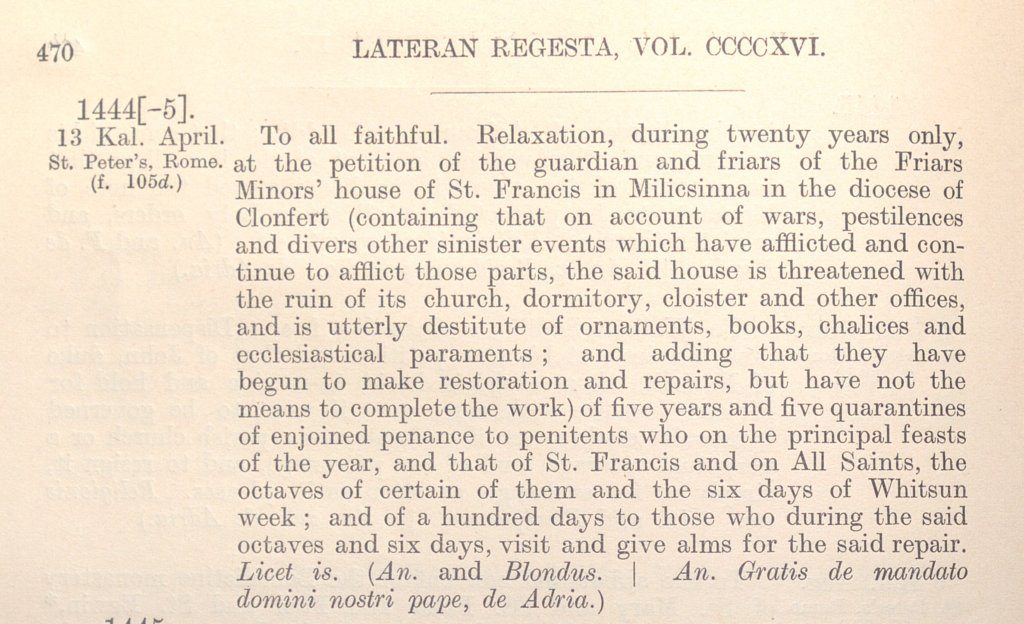
The friary was recorded as Observant in 1479, in Mícheál Ó Cléirigh’s (c.1590–1643) list of Franciscan foundations in Ireland. Some sources, probably on account of the Observant reform being introduced in Meelick in 1479, give that year as the date of the foundation. Such is the case with The Annals of the Four Masters compiled between 1632 and 1636 which record that the Franciscan friary on the Shannon was established by O’Madden in 1479 as a burial place for himself and the family.
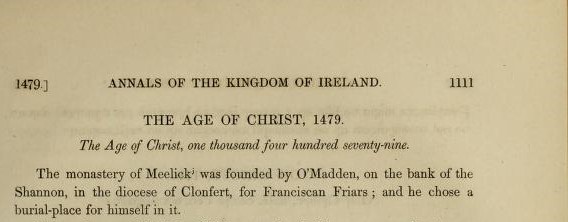
It was mentioned by Donatus Mooney that in 1616 the friary was in the possession of the Earl of Clanrickard and had been largely destroyed and vacant for a long time. Not much remains of the original friary complex apart from the church, which contains masonry elements of earlier buildings. The church is still in use today, which makes it one of the oldest Catholic churches in Ireland still actively used to celebrate mass.
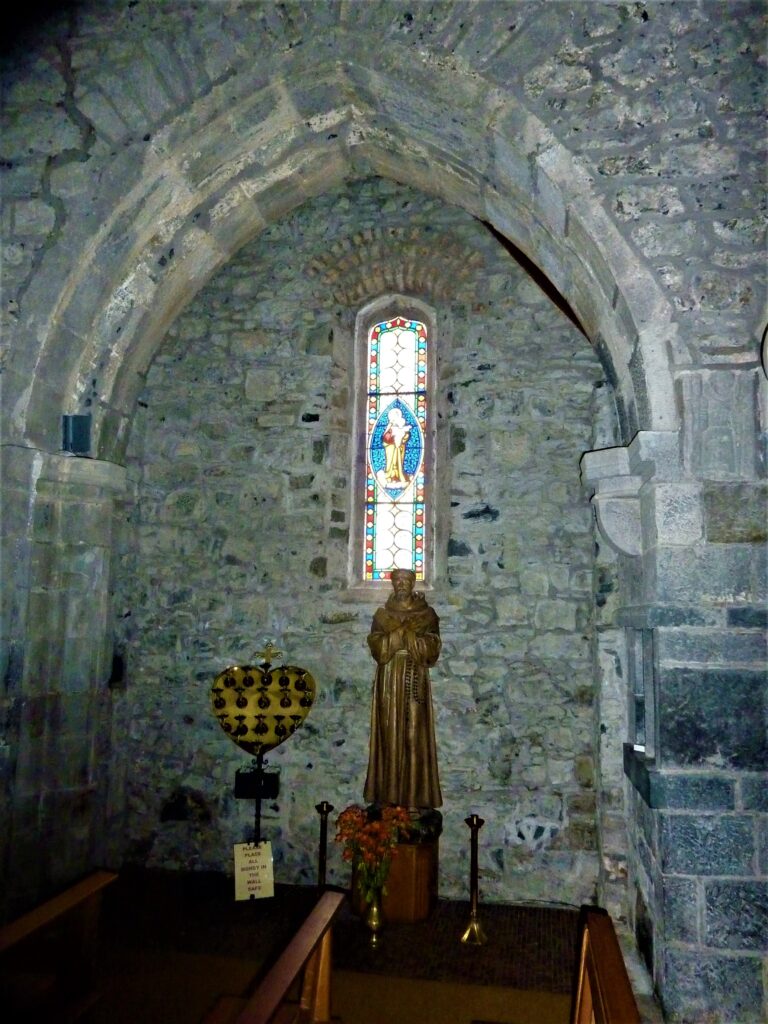
In the early thirteenth century, the de Burgh family established a castle in Meelick, which was heavily destroyed in 1316 and subsequently parts of it were used in the construction of the Franciscan friary. An archway opening into the south chapel displays a late medieval image of Saint Francis, inserted into the capital, the image may have originally been part of the tomb surround or was inserted into the cloister arcade. Francis is shown standing between two columns, which originally probably supported a niche-head. His right hand is raised in blessing and in his left hand he carries a cross staff. A side wound is visible through the folds of his habit.
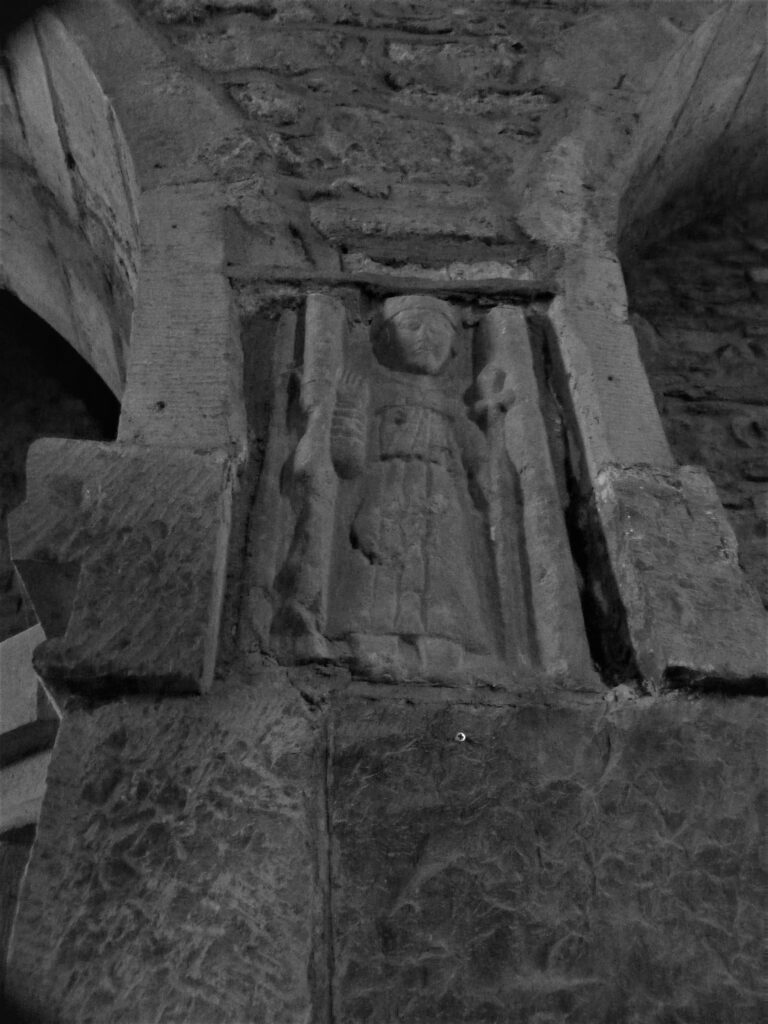
A ghost tale, recorded by Thomas More Madden in 1901, concerns the O’Maddens in the late sixteenth century. According to the story, in 1577 Lord Donal O’Madden and his son were passing the friary one evening when the friars were chanting prayers for the dead, they joined the service. As they mounted their horses after the prayers, they were warned by a phantom not to attend a feast given by the English. They did not heed the warning and were killed ‘ruthlessly and in cold blood massacre’ by the treacherous Lord Deputy Sydney.
An early modern chalice dated to 1640 is associated with Meelick friary, it is now housed at the National Museum of Ireland. The inscription engraved on the facets of the foot reads: ‘Fr.: P: Paulus : O : Mulgaoihe : procurauit hunc calicem pro Con : de myllicke p quo oretur : ano 1640’ (‘Friar Paul O Mulgaoihe acquired this chalice for the convent of Meelick for whom it should be prayed [in] the year 1640’). The Paul O Mulgaoihe mentioned in the inscription can be identified as Fergus Molgey, who was received into the Franciscan Order at Meelick in 1632 and took the name Paul. One facet of the foot is engraved with the Crucifixion. The chalice testifies to the fact that the friars remained in the area, despite the friary being attacked and destroyed.
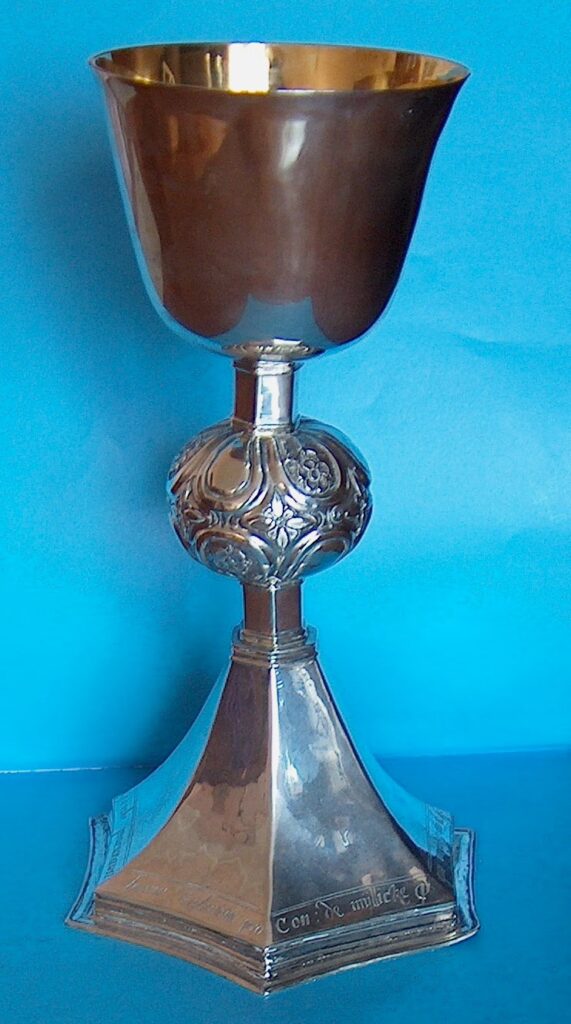
Bibliography
- Bliss, W. H. and J. A. Twemlow, ed., Calendar of Papal Registers Relating to Great Britain and Ireland: Volume 6, 1404-1415, London: HM Stationery Office, 1904.
- Gwynn, Aubrey and R. Neville Hadcock, Medieval Religious Houses Ireland, London: Longman Group, 1970.
- Hunt, John, Irish Medieval Figure Sculpture, 1200-1600: A Study of Irish Tombs with Notes on Costume and Armour, Dublin: Irish University Press, 1974.
- Jennings, Brendan, ‘Donatus Moneyus, De Provincia Hiberniae S. Francisci’, Analecta Hibernica, vol. 6, 1934, pp. 12-138.
- –––, ‘Part II: Brevis Synopsis Provinciae Hiberniae FF. Minorum’, Analecta Hibernica, vol. 6, 1934, pp. 139-191.
- Madden, Thomas More, ‘The O’Maddens of Silanchia, or Siol Anmachadha, and Their Descendants, from the Milesian Invasion of Ireland to the Present Time’, Journal of the Galway Archaeological and Historical Society, vol. 1, no. 3, 1901, pp. 184–195.
- Moloney, Joseph, ‘Part III: Brussels MS. 3410: A Chronological List of the Foundations of the Irish Franciscan Province’, Analecta Hibernica, vol. 6, 1934, pp. 192-202.
- Ó Floinn, Raghnall, ed., Franciscan Faith: Sacred Art in Ireland, AD 1600-1750, Dublin: National Museum of Ireland & Wordwell, 2011
- O’Keeffe, Tadhg, ‘Meelick Friary’s Hidden History’, Archaeology Ireland, vol. 33, no. 3, 2019, pp. 38-41.
Samuel Brown
